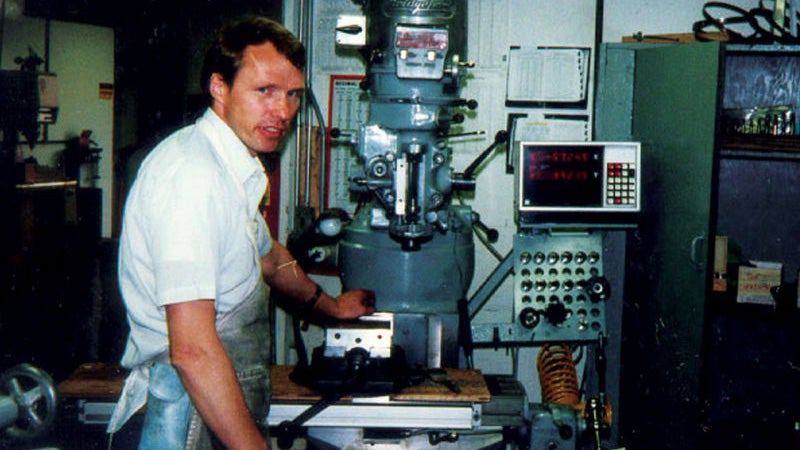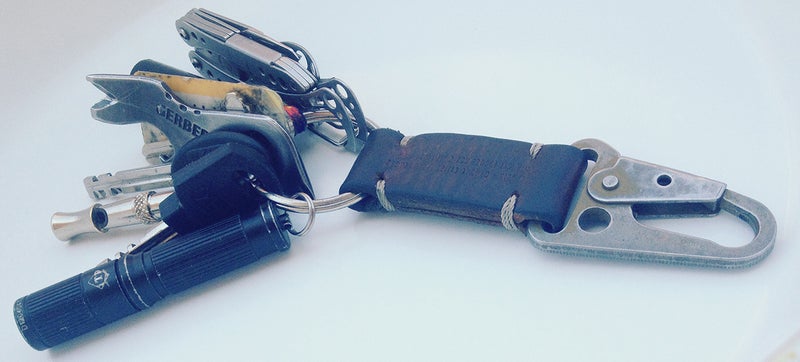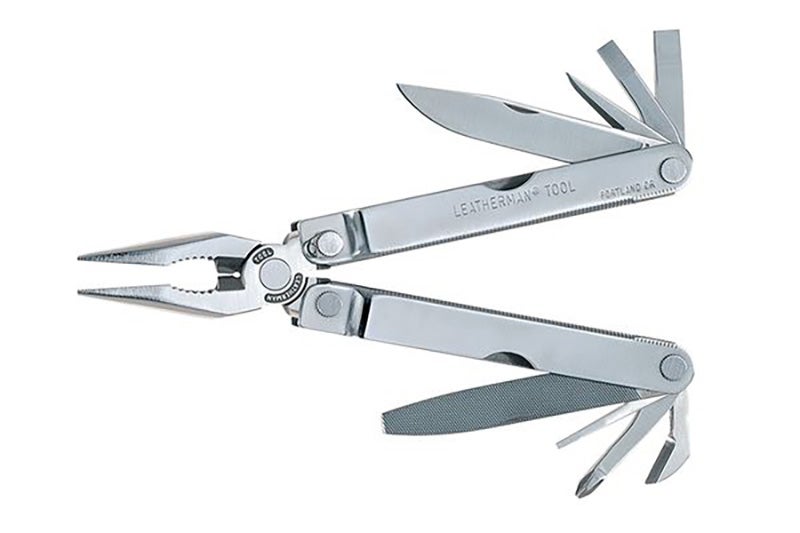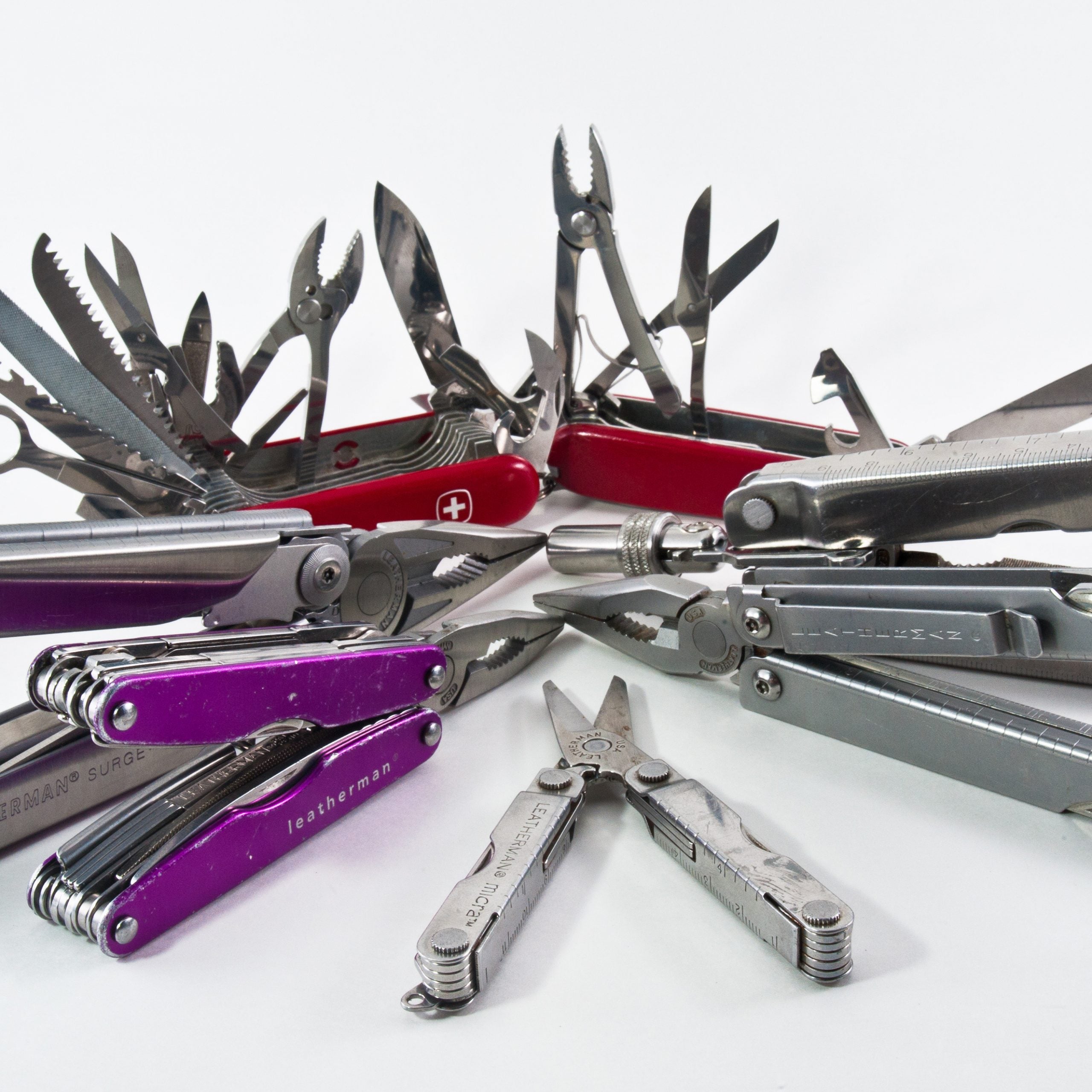Way back in 1980, a young engineer named Tim Leatherman came up with the idea for a pair of pliers you could easily carry in your pocket. Three years later, his hit the market. Priced at $25, it carried a dozen tools, including the now-definitive needle-nose pliers. You could use the tool to tackle emergency roadside repairs, small chores around the house, and the infinite variety of little problems life throws at you every day.
IndefinitelyWild
 IndefinitelyWild聽is a lifestyle column telling the story of adventure travel in the outdoors, the vehicles and gear that get us there, and the people we meet along the way. Follow us on聽,听, and聽.
IndefinitelyWild聽is a lifestyle column telling the story of adventure travel in the outdoors, the vehicles and gear that get us there, and the people we meet along the way. Follow us on聽,听, and聽.Today, Leatherman sells more than $100 million each year of what are now called multitools, and the market is exploding with all manner of exciting new designs from new companies. But can today鈥檚 complicated, intricate, and often expensive tools really do much more for you than the original? Let鈥檚 cut through the marketing speak, inflated claims, and overly cheap knife blades to help you find the tool that鈥檚 right for you.

Rule #1: All That Matters Is How You Carry It
The first rule of multitool buying: the best tool in an emergency is the one you have with you. When in doubt about any other facet of multitool use, refer to this rule.
I used to work as a carpenter, painter, and handyman. I fixed up the house I live in. I鈥檓 the guy everyone I know calls when they have any sort of mechanical problem, and I drive a notoriously unreliable old Land Rover that I maintain myself. I like tools, and I know how to use them. You know which multitool I use nine times out of ten? A dinky little Leatherman Style PS. That鈥檚 because it rides on my keychain, so it鈥檚 with me if I鈥檓 on my bicycle or motorcycle, in board shorts, at the climbing gym, and walking my dog. It鈥檚 TSA compliant, so I even take it on airplanes. Because it鈥檚 so easy to carry, it enables me to respond to problems immediately. Something broke? There, I fixed it.
Are there bigger, better tools out there? Of course. But having to go get it defeats the entire mission of a multitool: capability, conveniently carried. If I have to put down what I鈥檓 doing and go get something, I may as well just go out to my garage or truck and bring back my real tool kit.
Are you really going to wear a little sheath on your belt with a full-size multitool everywhere you go? If so, I salute your preparedness, but you鈥檙e also probably a practical enough person to realize the hardcore EDC lifestyle isn鈥檛 for everyone.
Rule #2: Multitools Are No Substitute for Real Tools
Yes, you can fix a few things on your car with a multitool. You can tighten a loose screw, trim a zip tie, or even pull a fuse. But if your work gets more serious, you鈥檒l need a socket set, T-handles, wire crimpers, a breaker bar, and all manner of proprietary widgets and gizmos.
You know this already, so why am I telling you? Because it should help simplify your multitool needs. You don鈥檛 need to carry one with an array of metric, imperial, and Torx bits. If a job requires those things, you鈥檒l need to get out your real tools anyway.
Instead of trying to find a multitool capable of solving any repair need you can possibly imagine, focus on finding one that can deal with common, day-to-day problems and is small and slim enough to carry easily.
Need a specific tool for a specific job? Often, you can just carry it separately and more easily than you would if it was included in a multitool. For example, I need a 12-millimeter Allen wrench to pull the wheels off my bicycle. Instead of trying to lug around a big multitool with a bit driver and a selection of easily lost bits, I just throw a 12-millimeter Allen wrench into a pocket. Job done. That little wrench weighs nothing, works better, and is way stronger than a multitool鈥檚 folding bit driver could ever hope to be.

Rule #3: Ditch the Knife Blade
Are you a handy person? Do you like to be prepared? Heck, are you the kind of person who carries a multitool? Then you should also understand that a knife is one of the most essential tools any person can carry. We humans have all manner of appendages capable of gripping and tearing and twisting and pulling, but we do not have any that are capable of cutting. Well, at least with anything approaching delicacy and without sticking stuff in your mouth. So you will need a knife.
Why not rely on a knife mounted in a multitool? Well, it turns out that a big clump of tools does not make a good handle. And the way you grip and interact with your knife is arguably more important than any aspect of its blade. But while we鈥檙e talking about blades, it鈥檚 worth stating that every knife blade ever mounted in a multitool has just sucked. They鈥檙e made from cheap steel, include pointless serrations, and are weakly mounted, and the shape of the handle and the way the knife is attached limit your ability to use the blade鈥檚 entire length.
Save yourself a ton of frustration and swearing and just carry a quality single-blade locking pocketknife. It鈥檒l be the most-used tool in your pocket.

Rule #4: Simple Is Best
Leatherman鈥檚 latest tool is . Targeted at outdoorsy types and people who read a bunch of B.S. about survival, it includes a useless ferro rod, a functionless knife sharpener, and a terrible little whistle on its handle. Not only are these parts so small that they鈥檙e worthless, but you鈥檒l also lose them the first time you go car camping.
You want a multitool that is simple, useful, and robust鈥攁nd one you can easily carry with you. The Signal is otherwise a decent outdoors-oriented multitool, complete with useful stuff like a can opener and little wood saw. But the Leatherman Rebar packs all those functions and more in a more durable tool鈥攆or $40 less.
Rule #5: Anything Designed to Fit in Your Wallet Is Trash
Take it from someone who likes carrying tools with him so much that it鈥檚 borderline OCD: every tool designed to fit in your wallet is totally worthless. I鈥檝e tried carrying the foldable knives, the one-piece metal survival cards, and even the Swiss Card. None of them work, and none of them last, all while giving you a bad case of Constanza Wallet.
If you want an array of genuinely useful stuff鈥攍ike a little flashlight, pry bar, and whatnot鈥攑ut it on your keychain.
Don鈥檛 even get me started on the .
What Should You Buy?
It鈥檚 totally overwhelming to look at the vast array of multitools now available. But if you apply these six rules, you鈥檒l find that most are poorly constructed, overly complicated attempts to sell you something you don鈥檛 need.
If you want a keychain tool, I can鈥檛 recommend the highly enough. That you can take it on an airplane without any hassle from security is a life changer if you like to travel carry-on only.
If you want a slightly larger multitool that鈥檚 still pocket friendly, Leatherman鈥檚 much-loved Juice range is a good place to start. It has more tools and a more comfortable handle that allows you to apply more force.
Do you really want to wear a multitool holster? I stopped carrying full-size tools a long time ago, but if you insist, then look at full-size options from Leatherman, SOG, Victorinox, and Gerber. All Leatherman multitools are made in the United States and are of great quality. They鈥檙e also backed with a 25-year guarantee. I鈥檝e always loved , which doubles the force you apply to the pliers, but the design of the company鈥檚 tools can be frustrating. Some of are made in the United States and are well regarded, but after one snapped in half on me a few years ago, I now avoid the brand. are extremely well made, but their price reflects that. If I were shopping for a large multitool right now, it鈥檇 be . Everything you need, nothing you don鈥檛, in a tool that won鈥檛 fail you.


